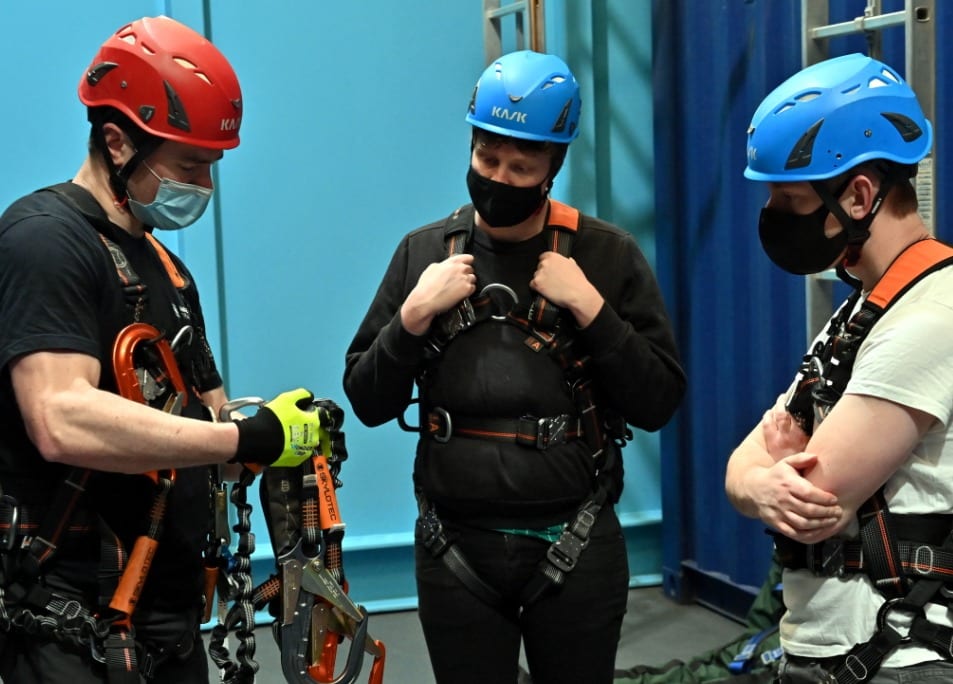Growing up in the north east of Scotland, you feel in the minority if you haven’t undertaken some form of offshore training. Countless friends have talked about going through the helicopter “dunk” and it was unlikely I was going to experience it myself unless PR and marketing was suddenly deemed an essential asset in the middle of the North Sea.
However, when we started working with Maersk Training UK (MTUK) earlier this year, an opportunity presented itself. The company was unveiling the upgrade of its Aberdeen safety and survival centre and offered the media a trial of some of its new equipment and courses. In line with our company approach, and the fact that leaving the house is a rare treat at present, my hand was up before you could say ‘creative curiosity’.
I’ve always been a decent swimmer so I was quite excited by the prospect – and it was the first opportunity I’d had to look out my dookers (swimming trunks, for readers not familiar with the Aberdeen vernacular – Ed.) for months due to lockdown restrictions. Reassuringly, I was told the water temperature would be more in line with what I’m used to at my local pool, rather than replicating the North Sea.
Feeling reassured following the briefing from the instructors, it was time to suit up and enter the vehicle for the Helicopter Underwater Escape Training (HUET), which is used to help offshore workers react safely in an emergency situation.
We were trained to count to seven as the water rises, however I found myself becoming slightly disorientated and forgetting to count as the water passed over my head. Despite my lack of basic maths ability, I was able to successfully escape through the window of the vehicle (and if I didn’t, two experienced divers were poised either side to assist).
After a few more runs, it was time for the manoeuvre that “leads to many a sleepless night” where the cabin rotates 180 degrees while being submerged in water to simulate a helicopter ditching. I can’t lie, when you are strapped in upside down underwater, there is an overwhelming urge to rush and panic. However, the guidance from the team meant I was able to emerge unscathed from the pool. I’d compare it to the feeling you get when you leave a rollercoaster – after some initial apprehension, you want to go again. I’ll also choose to believe the instructors were genuine when they said we handled it better than a lot of experienced offshore workers.

As well as our underwater adventure, we tested the Working at Height course, which replicates working on wind turbines both onshore and offshore. Almost forgetting I had a day job, I helped facilitate the broadcast media and attached a GoPro to grab footage of the surroundings of the replica turbine and the subsequent descend.
While climbing the ladder, what struck me most was how tight the space was inside the turbine. It really opens your eyes to the skill level required for the teams offshore and the risks they take on a daily basis. Thankfully, those who do are in safe hands with the team at Maersk Training where the instructors were first class throughout the day.
A key part of the £720,000 refurbishment is to ensure the training centre continues to meet the needs of the industry as it looks to the future and the energy transition. Although I’m unlikely to need any of the advanced skills required to work offshore, I know where to call if I do.
Back to blog